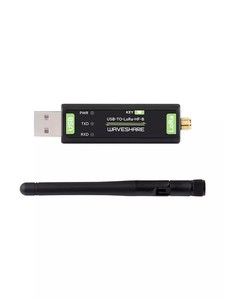Introduction to IoT Communication Module
The IoT Communication Module is a pivotal component in the burgeoning world of the Internet of Things (IoT). It facilitates seamless connectivity between devices, allowing them to transmit and receive data over various networks. As businesses embrace digital transformation, IoT communication modules are becoming essential for enhancing efficiency, automating processes, and improving user experiences. Understanding the types, applications, features, and advantages of these modules can significantly influence your IoT strategy.
Types of IoT Communication Modules
There are several types of IoT communication modules designed to cater to different communication protocols and applications. Each type is engineered to fulfill specific connectivity needs:
- Cellular Modules: These modules utilize cellular networks such as 4G, 5G, and LTE, providing robust connectivity in remote areas.
- Wi-Fi Modules: Ideal for devices within a close range of a wireless router, these modules offer high-speed internet access.
- Bluetooth Modules: Common in personal devices, Bluetooth modules are perfect for short-range communication, often used in wearables and smart home devices.
- LoRaWAN Modules: These are designed for low-power wide-area networks, enabling long-range communication suitable for agricultural and industrial applications.
- Zigbee Modules: Primarily used for home automation, these modules support mesh networking, allowing multiple devices to communicate with each other.
Applications of IoT Communication Modules
As versatile tools, IoT communication modules find applications across diverse industries, each bringing unique advantages:
- Smart Home Devices: These modules enable connectivity in home automation systems, allowing users to control lighting, heating, and security remotely.
- Industrial IoT: In manufacturing and production, these modules monitor equipment performance and facilitate predictive maintenance, enhancing operational efficiency.
- Healthcare: IoT modules are integral in remote patient monitoring, enabling healthcare providers to gather vital health data without the need for in-person visits.
- Agriculture: Employing sensors connected via IoT modules allows farmers to monitor soil conditions, weather patterns, and crop health, leading to better yield and resource management.
- Smart City Solutions: IoT communication modules play a crucial role in traffic management, waste management, and environmental monitoring, contributing to the development of smart cities.
Features and Advantages of IoT Communication Modules
The IoT communication module boasts several distinctive features that offer numerous advantages, making them a critical element in modern IoT applications:
- Scalability: IoT modules can connect a vast number of devices, ensuring that your infrastructure can grow with your business needs.
- Low Power Consumption: Many modules are designed to consume minimal energy, extending the battery life of IoT devices.
- High Data Transmission Rates: Advanced modules support high-speed data transfer, allowing for real-time analytics and reporting.
- Flexible Connectivity Options: With a variety of communication protocols available, users can select the most appropriate network for their specific application, enhancing performance and reliability.
- Robust Security Features: Leading IoT communication modules incorporate advanced security protocols to protect data integrity and user privacy, which is critical in today’s digital landscape.





















































